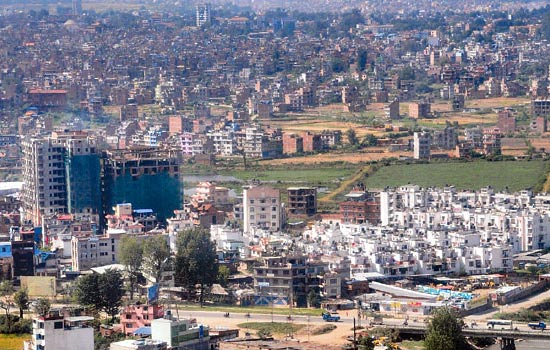Realty sector gradually emerging out of trouble


Real estate transactions have picked up, albeit in slow pace, in the recent months, leading to increase in land registration fee collection.
According to the Finance Ministry, the land registration fee collection has increased by 16.16 percent to Rs 3.09 billion as of first 10 months of the current fiscal year compared to Rs 2.66 billion over the same period last fiscal year.
According to data provided by the Department of Land Reforms and Management (DoLRM), land registration fee collection has remained higher this year compared to last year except during the first three months. The DoLRM collected a revenue of Rs 723.6 million in the first three months of this fiscal compared to Rs 756.2 million over the same period last year.
However, the collection of land registration fee has not met the target. For the first 10 months this year, the government had targeted to collect Rs 3.81 billion.
While looking at the land revenue collection over the last three years, collection started to suffer since banks and financial institutions started discouraging real estate loans as per the direction of Nepal Rastra Bank in the middle of fiscal year 2009-10.
The land registration fee collection dropped to Rs 3.21 billion in FY 2010-11 from Rs 4.65 billion in FY 2009-10 owing to the recession in the real estate sector. The revenue collection, however, has improved of late with realty traders reporting gradual increase in their trades.
Ichchha Raj Tamang, president of the Nepal Land and Housing Developers’ Association (NLHDA), said transactions in individual lands have slowly gone up, bringing relief to housing developers. “The government’s soft corner has helped revive the realty sector,” he said.
Tamang’s thought is shared by Min Man Shrestha, general secretary of the NLHDA. He explained that the housing and apartment sales have gone up by 25-30 percent in the recent days, while the low-cost lands are also being sold in the recent days.
He attributes the recent growth to banks’ decision to lower interest rate on home loans, which has now come down to 10-11 percent.
Bankers also admit that they have started providing home loans although they are reluctant provide extra loans to housing projects.
CEO of NIC Bank Sashin Joshi said that the home loans bear less risk compared to loans provided to developers, and banks are more willing to disberse home loans in the recent days.
Realty traders are of the view that loans should be given to developers to allow them to complete the housing and apartment projects. But the developers’ poor repayment record has forced the banks not to make extra lending to the developers.
“Repayment is poor and it may aggravate at the end of the current fiscal year when all banks go for recovery of the loans at bigger scale,” said Joshi.
The Nepal Rastra Bank holds the same assessment. “The realty sector has not improved at all,” said a senior NRB official. “Higher revenue collection by the land revenue offices could be due to higher declaration of purchase price by buyers amid threat that they might have to show income source on many other occasions,” said the central bank official.
However, the government’s efforts as well as excess liquidity in the banks and financial institutions are expected to help boost the realty sector. The government is mulling to arrange cheap loans for its employees so that they could purchase apartments from the developers.
The government has also raised the investment ceiling in the realty sector, with the investors no longer required to show source of their income up to Rs 10 million from the previous limit of Rs 5 million.















